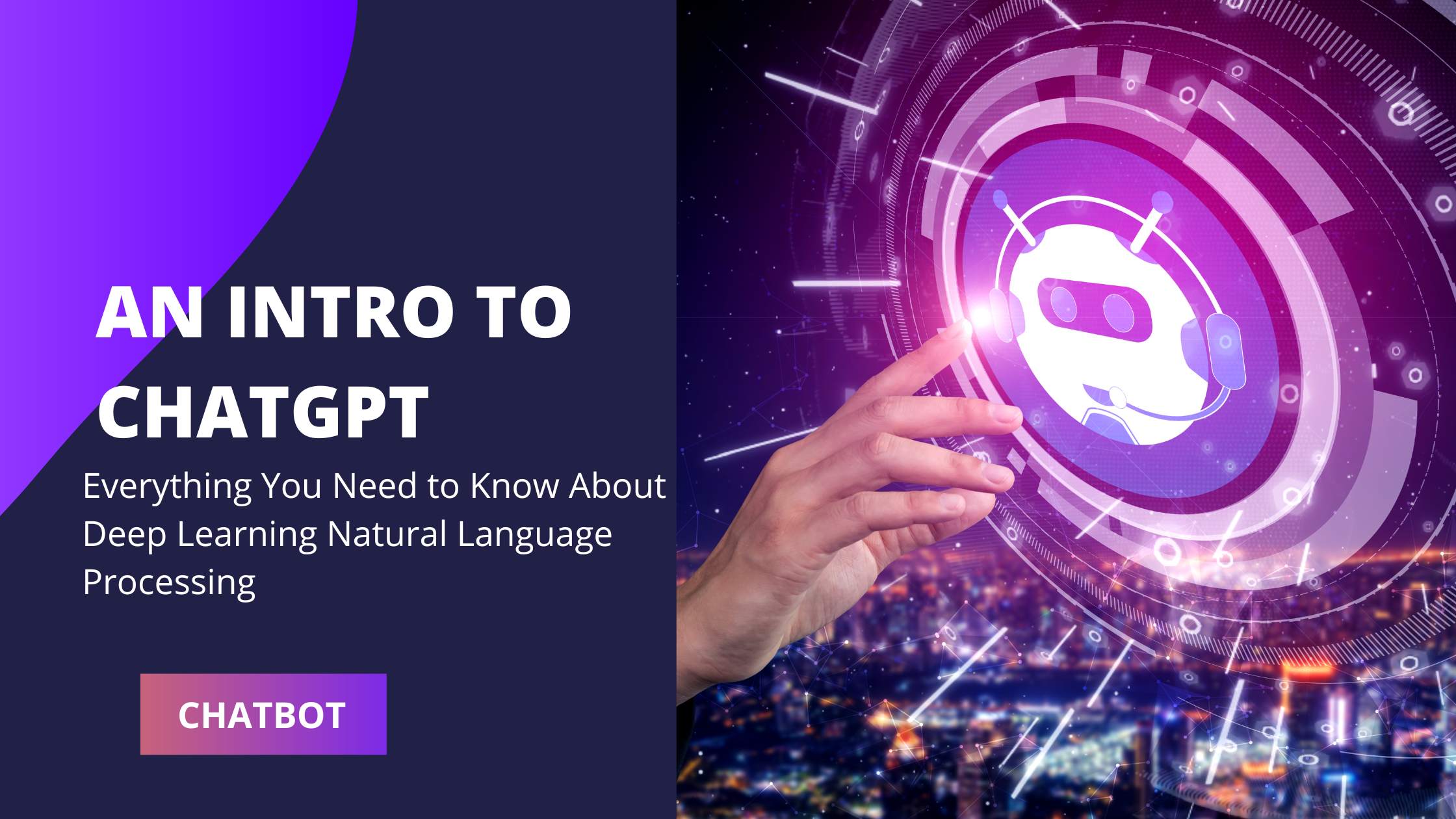Are you interested in learning more about natural language processing (NLP) and deep learning? If so, then Chat GPT is a technology you should be aware of. Chat GPT is a type of deep learning algorithm that uses a large text dataset to generate new text similarly. In this blog, we’ll explore the basics of Chat GPT and will provide you with everything you need to know about this powerful technology.
What is Chat GPT?
Chat GPT (Generative Pre-trained Transformer) is a type of artificial intelligence (AI) designed to enable chat interactions between humans and computers.
Chat GPT is based on natural language processing (NLP) and natural language understanding (NLU) technologies. The system can identify user intent and produce relevant responses. It is used in customer service, customer support, virtual assistants, and more applications.
Who is the CEO of Chat GPT?
The purpose of Chat GPT is to progress the advancement of AI, which is the goal of Open AI, founded by Elon Musk, Ilya Sutskever, Wojciech Zaremba, Greg Brockman, and Sam Altman in 2015. However, Musk departed from the board of Open AI in February 2018 to avoid any upcoming issues with Tesla. Sam Altman is currently the Chief Executive Officer at Chat GPT.
Benefits of Chat GPT
Chat GPT is an incredibly powerful tool for natural language processing, as it can generate complex text with minimal effort. It is also a great way to create accurate machine translations and answer questions quickly. With Chat GPT, you can dramatically reduce the time it takes to develop natural language processing applications, allowing you to focus on more critical tasks. Following are some benefits of Chat GPT
1. Personalized Responses
GPT Chatbot technology is its ability to generate personalized responses to customer queries. By using natural language processing, GPT Chatbot technology can generate customized and accurate responses to customer queries. This means that customers can get the answers they need from the chatbot, without having to wait for a customer service representative to respond.
2. Predictive Analytics
GPT Chatbot technology can be used for predictive analytics. By analyzing customer conversations, the chatbot can predict customer behavior and provide insights that can be used to improve customer service. This can be used to identify customer pain points and provide solutions to improve customer experience.
3. Generate Code
GPT Chatbot technology can be used to write basic scripts or more qualitative questions related to programming. For instance, it can answer the question, “How can I loop through a list efficiently in Python?”
4. Having trouble writing
Is there a blog post or email you’ve meant to write but need to get started? Just ask, write a friendly email to Ash that asks him if he enjoyed the off-site, and then update his monthly report and send me his promotion document. Edit or tweak it as needed based on that.
5. Summarize
Paste a paragraph and Ask the Chatbot, “Can you summarize this article in one paragraph as if it were for a 5th grader?” It can generate an accurate response.
6. Developing a plan
Imagine that you have an overwhelming task and a reasonable timeline, and ask, “Please provide me with a schedule for launching my digital marketing agency by Jan 1, 2023. Give details about deliverables, timelines, contingency planning, team bonding, and breaks. The chatbot will generate an accurate answer.
Difference between Google and Chat GPT
Google is a search engine, while Chat GPT is a form of artificial intelligence used to create virtual agents and chatbots. While both technologies have the potential to be extremely helpful, they are used for very different purposes.

Google is a search engine designed to help users find information quickly and easily. It works by analyzing the content of websites and pages and then presenting the most relevant results to the user. Google also uses a complex algorithm to rank pages and determine what the most relevant results are. While Google is incredibly powerful, it does have some limitations. It is not able to provide the same level of insight and accuracy that a human can.
Chat GPT, on the other hand, is a form of artificial intelligence that is used to create virtual agents and chatbots. It works by analyzing the conversation between two parties and predicting the best response. Chat GPT is like Google in that it relies on algorithms to determine the best response. However, it is much more accurate and can provide more in-depth answers.
Conclusion
Chat GPT AI is an incredibly powerful and revolutionary technology that can help us automate tedious and time-consuming tasks. However, it is important to keep in mind that AI is not a replacement for humans. AI is a tool that can increase productivity and efficiency, but its capabilities are limited, and it cannot replace the creativity, empathy, and judgment that humans possess. AI should be used to supplement and enhance human capabilities, not replace them.
FAQs
1. How many neurons are in GPT3?
GPT-3 has 175 billion parameters and is composed of up to 48 layers of transformer blocks containing up to 12 attention heads each. Therefore, it is estimated to contain up to 11.5 billion neurons.
2. Who created GPT?
GPT-3 was created by Open AI, a research laboratory based in San Francisco. Open AI is a non-profit artificial intelligence research organization founded by Elon Musk, Sam Altman, Greg Brockman, Ilya Sutskever, and Wojciech Zaremba.
3. How long did GPT 3 take to train?
GPT-3 took approximately two years to train.
4. How much data was GPT 3 trained on?
GPT-3 was trained on a 45TB of text dataset, which included more than 700 billion words.
5. How to use GPT 3 to generate text?
Using GPT-3 to generate text is easy. All you need to do is provide some context and set the parameters in the GPT-3 API. Depending on the API you’re using, you’ll need to include a prompt, a length for the generated text, and other settings. After you’ve set these parameters, you’ll be able to send the request to the API, which will generate text based on the parameters you provided.
6. Is GPT 3 sentient?
No, GPT-3 is not sentient. It is a robust artificial intelligence algorithm that can generate natural-sounding humanlike text. Still, it cannot think, reason, or make autonomous decisions like a sentient being.
7. Can gpt3 write code?
No, GPT-3 is not able to write code. It is a natural language processing system used to understand and predict natural language. It cannot perform tasks such as coding, but it can generate text similar in style to the input it is given.
8. How much data was GPT 3 trained on?
GPT-3 was trained on around 45TB of data sourced from the internet, including text and images.
9. Will GPT 3 replace programmers?
No, GPT-3 will not replace programmers. GPT-3 is an AI system designed to help with natural language processing and generate creative content, but it still requires humans to operate and use it properly. Programming is a complex task requiring an understanding of problem-solving and logic, which GPT-3 cannot do.
10. Can GPT 3 write a book?
No, GPT-3 cannot write a book. GPT-3 is an artificial intelligence system capable of generating text in response to user input. GPT-3 is not capable of the kind of creative writing, storytelling, and world-building that is necessary for writing a book.
11. Is GPT 3 Turing complete?
GPT-3 still needs to be Turing complete. It is a statistical language model that uses machine learning techniques to generate natural language from a given prompt. It cannot solve all problems like a Turing-complete system would be able to.
12. How many layers does GPT 3 have?
GPT-3 is a deep learning model that consists of 175 layers.
Read More: Content writing and SEO tips to help you repurpose old blog posts







